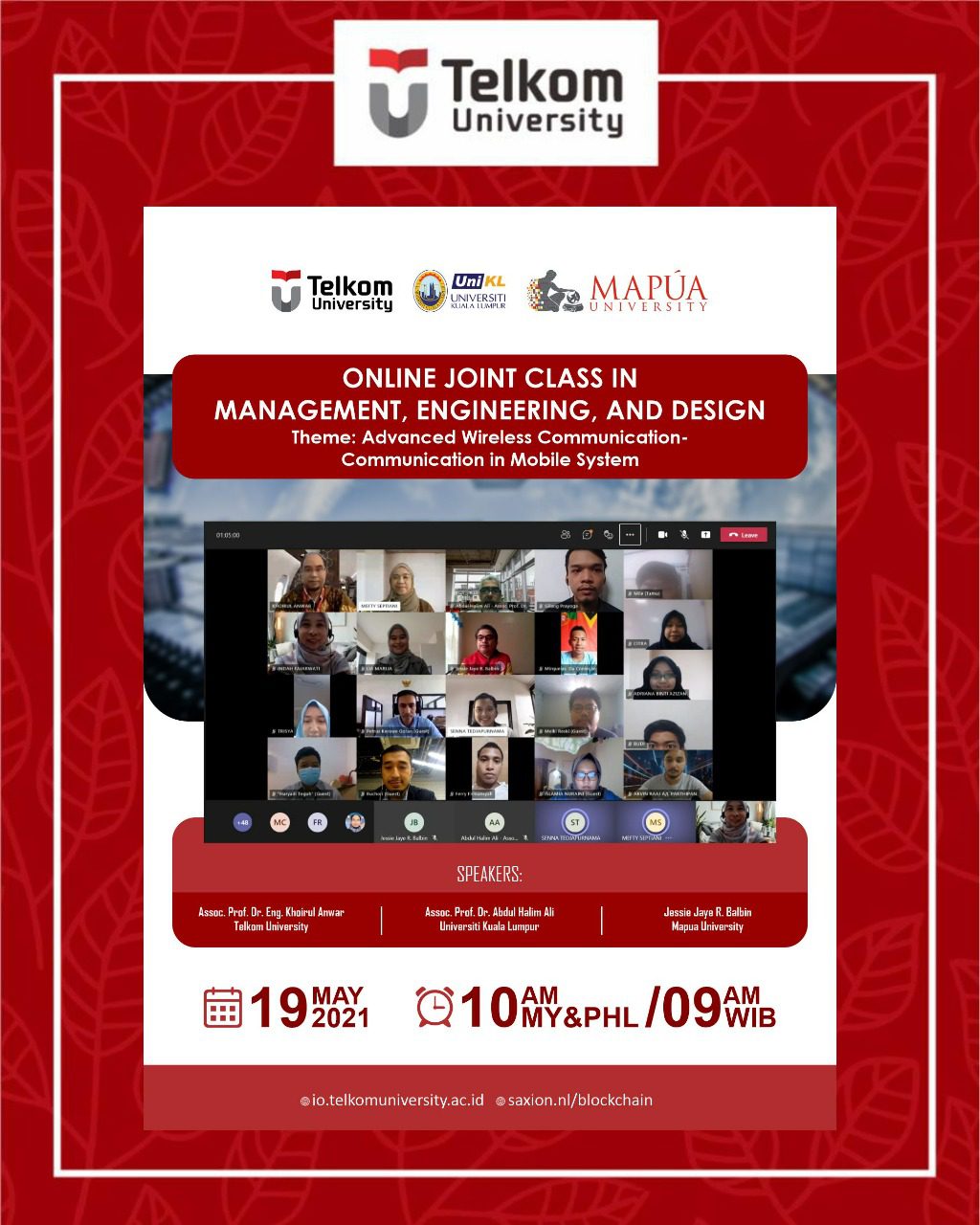
Communication in Mobile System
Communication in Mobile System. Telkom University through International Office in collaboration with Universiti Kuala Lumpur – Malaysia and Mapua University – Philippines organized the 4th Online Joint Class in Management, Engineering, and Design entitled “Advanced Wireless Communication-Communication in Mobile System” on Wednesday, 19th May 2021 by inviting several experts from three universities. This session invites three main speakers including:
- Assoc. Prof. Dr. Eng. Khoirul Anwar (Telkom University) – An Introduction to 5G and 6G and Their Developments in Indonesia
- Jessie Jaye R. Balbin, ECE, MEP (Mapua University) – Mobile Communication Standards
- Assoc. Prof. Dr. Abdul Halim Ali (Universiti Kuala Lumpur) – Multiple Access Scheme for Mobile Communication
Since its beginning from P&G and MIT Auto-ID Center in1999, the term “Internet of Things” (IoT) has been hoisted from a particular application concept, based on RFID, to a vastly eminent phrase that represents the common course to the future of numerous critical viewpoints of human life. One of the fields that received the massive impact of the Internet of Things is telecommunications.
Communication in New Era
Unlocks the first interval, Assoc. Prof. Dr. Abdul Halim Ali from Universiti Kuala Lumpur introduced the Multiple Access Scheme for Mobile Communication. In his presentation it was explained that Multiple Access is the use of multiplexing techniques to provide communication service to multiple users over a single channel. As cellular technology has progressed different multiple access schemes have been used. There are four main multiple access schemes that are used in cellular systems ranging from the very first analogue cellular technologies to those cellular technologies that are being developed for use in the future. The multiple access schemes are known as FDMA (Frequency Division Multiple Access), TDMA (Time Division Multiple Access), CDMA (Code Division Multiple Access), and OFDMA (Orthogonal Frequency Division Multiple Access).
Time changes, the world’s communication system has developed swiftly. The rapid development of technology has also influenced the development of cellular communication systems. In the presentation entitled Mobile Communication Standard, Jessie Jaye R. Balbin, ECE, MEP from Mapua University explained clearly about the development of this system. Starting from the emergence of the gen 1 analog system with the main problem of roaming between countries, gen 2 by using a more efficient modulation technology can be increased to 14.4 Kbps per time slot, until now in gen 5, distance is no longer a reason in communication.
In line with the development of world telecommunications, Indonesia is also preparing to contribute. Towards the final interval, Assoc. Prof. Dr. Eng. Khoirul Anwar from Telkom University introduced the 5G and 6G development in Indonesia. This 5G network is predicted to become a “Game Changer” and bolster economic growth for Indonesia. The existence of 5G in Indonesia is currently implemented in several fields such as the Future Railway and several artificial intelligence applications. The Ministry of Communication and Information of Indonesia has prepared the frequency to support the 5G in Indonesia. The frequency spectrum soon to be used in Indonesia starts from 600 MHz to 6 GHz, especially in the 3.5 GHz and 4.2 GHz ranges.
Ultimately, technology has succeeded in making what seemed impossible decades ago, as easy as the blink of an eye. The faraway now feel an inch, the complex ones turns in to simple, and the distance can be well connected. Ready for another “Game Changer”?(IO)***

